1031 exchanges are a smart way for owners of minerals and royalties to delay paying capital gains tax on property sales. This IRS rule lets you put off paying taxes when you trade mineral or royalty interests for other “like” properties that qualify. At Venergy Momentum, which has an A+ rating with the Better Business Bureau and great reviews from customers, we know how to handle these complicated exchanges. Visit our services page to learn more about how we can help you get the most out of your investment, and then set up a consultation to get personalized advice.
How It’s Done
The process begins with the exchangor marketing their property and securing a buyer. Once a Purchase and Sale Agreement (PSA) is executed, the responsibility to sell the relinquished property is transferred to a 1031 exchange intermediary. This intermediary then manages the exchange of the relinquished property for the replacement property, adhering to strict timelines set by the IRS.

Qualifying Properties For 1031 Exchanges
Properties eligible for 1031 exchanges must be of “like-kind,” including real estate, commercial properties, or other mineral and royalty rights held for investment. To maximize benefits, the replacement property should be of equal or greater value than the relinquished property.
The 45/180 Day Rule
The IRS enforces a 45-day period for identifying a replacement investment and a total of 180 days for closing on the new investment. These timeframes run concurrently, emphasizing the importance of timely decision-making.
Reverse Exchanges
In reverse exchanges, the new property is purchased before selling the old one. This option offers flexibility in taking advantage of market conditions, though the 45/180-day rule still applies.
1031 Exchange Tax Benefits
1031 exchanges are popular for their substantial tax benefits, allowing investors to defer taxes and maximize capital for reinvestment.
Some Of These Benefits Include:
- Put off the taxes that are due on properties that qualify
- Lets investors spread out their holdings without having to pay capital gains taxes
- Makes the most of the money that can be used to invest in other properties, mineral interests, etc.
Who Can Help Me With The 1031 Exchange Process?
Getting a 1031 exchange can be, to say the least, difficult. There are a lot of papers, lawyers, and hard-to-understand legal terms involved.
A qualified intermediary is someone that mineral owners often use to help them get through the 1031 exchange process more quickly and easily.
Qualified intermediaries are in charge of getting all the paperwork ready for the 1031 Exchange and making sure the money is transferred safely and correctly through a Qualified Escrow account at a federally insured bank. They also help you through the process to make sure you get all the tax breaks the 1031 Exchange can offer.
Seeking Professional Assistance
The complexity of 1031 Exchanges often necessitates guidance from qualified intermediaries. These professionals ensure proper document preparation and secure fund transfers, while also providing advice to maximize tax benefits.
Tips For A Smooth 1031 Exchange
- Maintain clear communication and organization throughout the process.
- Understand the importance of proper timing and legal compliance.
- Utilize expert assistance to navigate the intricate process.
Venergy Momentum: Your Guide In 1031 Exchanges
When it comes to 1031 Exchanges, Venergy Momentum is the clear leader in terms of knowledge. With an A+ BBB rating and 5-star Google reviews, our team is the best at helping people with these complicated transactions.





Leave a Comment